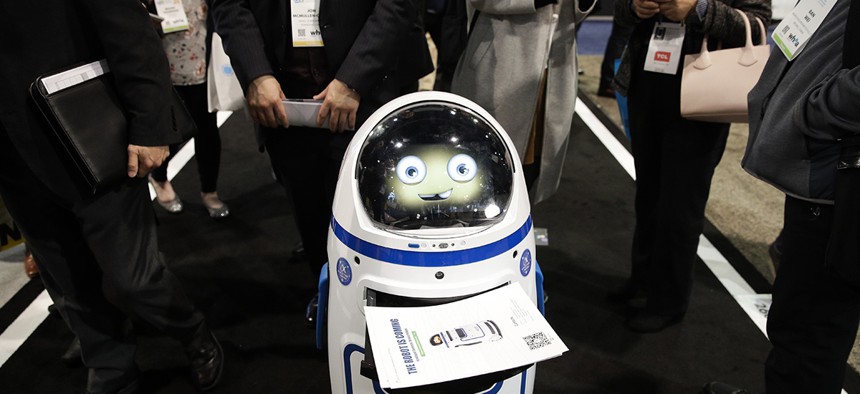Job Automation Will Hurt Women First But Will Ultimately Hurt Men More

Evolver's Fabo E01 service robot carries flyers at CES International, Wednesday, Jan. 10, 2018, in Las Vegas. Jae C. Hong/AP
The wave of automation is on its way.
In late 2017, the McKinsey Global Institute estimated that automation and other new technology could mean that 375 million people around the world will need to change occupations to avoid being completely put out of work by machines. Many more millions of people will in some way be displaced by automation.
Other research has suggested the impact won’t be equal. There’s a risk that gender and racial inequality will be exasperated by automation, as women and some ethnic minority groups are more likely to work in the lower-skilled jobs that are susceptible to automation, according to the Institute for Public Policy Research.
A new report by PwC suggests that it might not be so straightforward. The global consulting firm defines three separate waves of automation: the algorithm wave (encompassing the automation of simple computational tasks and analysis of structured data); the augmentation wave (automation of repeatable tasks, exchanging information through dynamic technological support, and statistical analysis of unstructured data); and the autonomy wave (automation that involves problem solving in dynamic real-world situations with responsive actions, such as driverless cars).
The first wave is already under way, the second is also happening now but won’t properly take off until the 2020s, and the third can’t be expected to have a serious impact on labor markets until the 2030s, the report says.
In these waves, different industries will be affected to varying degrees. For example, the financial and insurance industry will face most of its disruption from the augmentation wave, whereas the construction industry will be hit harder by the autonomy wave.
PwC also finds that these waves will impact men and women differently. The first two waves are likely to impact women more, putting potentially 23% of jobs at risk, but the third autonomy wave will effect men more severely. So by the mid-2030s as the autonomy wave is well under way, 34% of male jobs are at risk of automation, versus 26% for women.
The differences are even more stark among younger people. For men under the age of 25, there is a greater rate of potential automation of their jobs (46%) compared with that for young women (26%). This is mostly explained by the different types of jobs men and women tend to do within industries. For example, in the wholesale and retail trade sector, young men are often in craft and trade work, whereas young women are more likely or be in service and sales work.
Across all age groups, women could be displaced first due to the larger numbers of women in clerical positions in different industries. But at a broader level, women are more concentrated in sectors such as education and health, which require more personal and social skills that are less easily automated (for now).
All this being said, PwC’s estimates are based on the technical feasibility of automation. In reality, economic, legal, regulatory, or organizational constraints could limit the true impact. Because public policy will likely be needed to offset the inequitable impact of automation, with less-educated people hurt the most, this could also slow the technological progress. “Just because something can be automated in theory does not mean it will be economically or politically viable in practice,” the report wisely reminds us.
NEXT STORY: China's Surveillance State Should Scare Everyone


